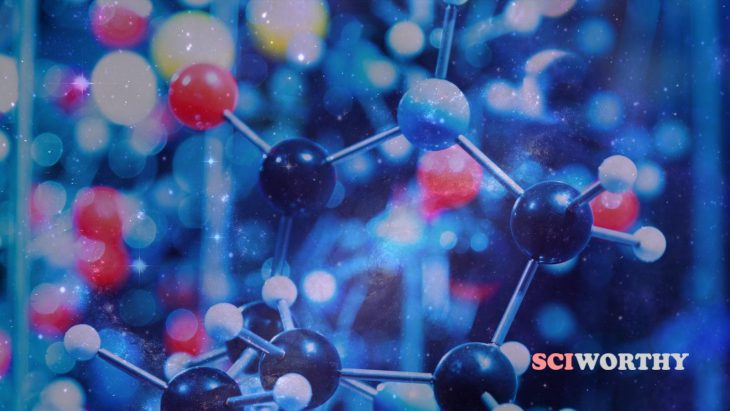Primitive life may have been very different from what we know today. Most biologists today agree that life must use “self-replicating molecules” — molecules that can make copies of themselves as the organism grows. Examples are DNA and RNA — the chemicals that make up our genes. These molecules are powerful precisely because they can copy themselves with the help of enzymes. RNA can be both genetic material and an enzyme in some cases. But maybe they were not the first molecules to do that.
The ancestors of enzymes, called protoenzymes, are another candidate for “first self replicating molecules” that scientists who study the origin of life are exploring. Over time, they would have been replaced by other more sophisticated structures.
One way to study this is to make self-replicating molecules in the lab and observe how they behave. Researchers Irena Mamajanov, Melina Caudan, and Tony Jia from the Earth-Life Science Institute in Japan have done just that.
The scientists studied two types of molecules. One type is called hyperbranched polyethylenimine (HyPEI) and glycerol citrate polymer-supported ZnS nanocrystals (NCs). These large molecules can be assembled in the lab by stacking other smaller molecules into tree-like arrangements. This is what is meant by “hyperbranched.” Previous research has shown that these molecules dissolve easily in water and flow freely. This makes them easy to work with in the lab.
A key challenge with “origin of life” research is that everything must come from something else. So, the researchers needed to build these molecules out of non-living chemicals that were likely present in the environment of ancient Earth. They dissolved HyPEI and NCs in water with a salt called zinc chloride and long molecules called “polyesters” similar to plastic, and then added another salt called sodium sulfide. By following these steps, the researchers obtained a stable compound called polymer-supported ZnS NCs.

This is a Transmission Electron Microscope image of ZnS/hyperbranched polymer particles used in this study. Credit: Tony Z. Jia, ELSI
These polymer-supported zinc nanocrystals, unusual as they were, had a few key traits in common with today’s biological molecules. They react more readily with other compounds when exposed to light, so they may be able to help chemical reactions dependent on light go faster. Because light was the dominant form of energy on Earth in those days, these molecules will help us understand how the first chemicals on Earth changed and evolved into life.
This work also supports an origin-of-life hypothesis called “Zinc World Theory.” Proponents of Zinc World Theory propose that life originated in the pores of rocks made of zinc sulfate, zapped with ultraviolet light and giving carbon dioxide molecules the energy needed to assemble into bigger carbon compounds.
The scientists’ main innovation in this study was their use of a straightforward technique of preparing stable self-replicating molecules. They may serve as a template for imitating enzymes and studying how these might have behaved in a more primitive Earth environment.


